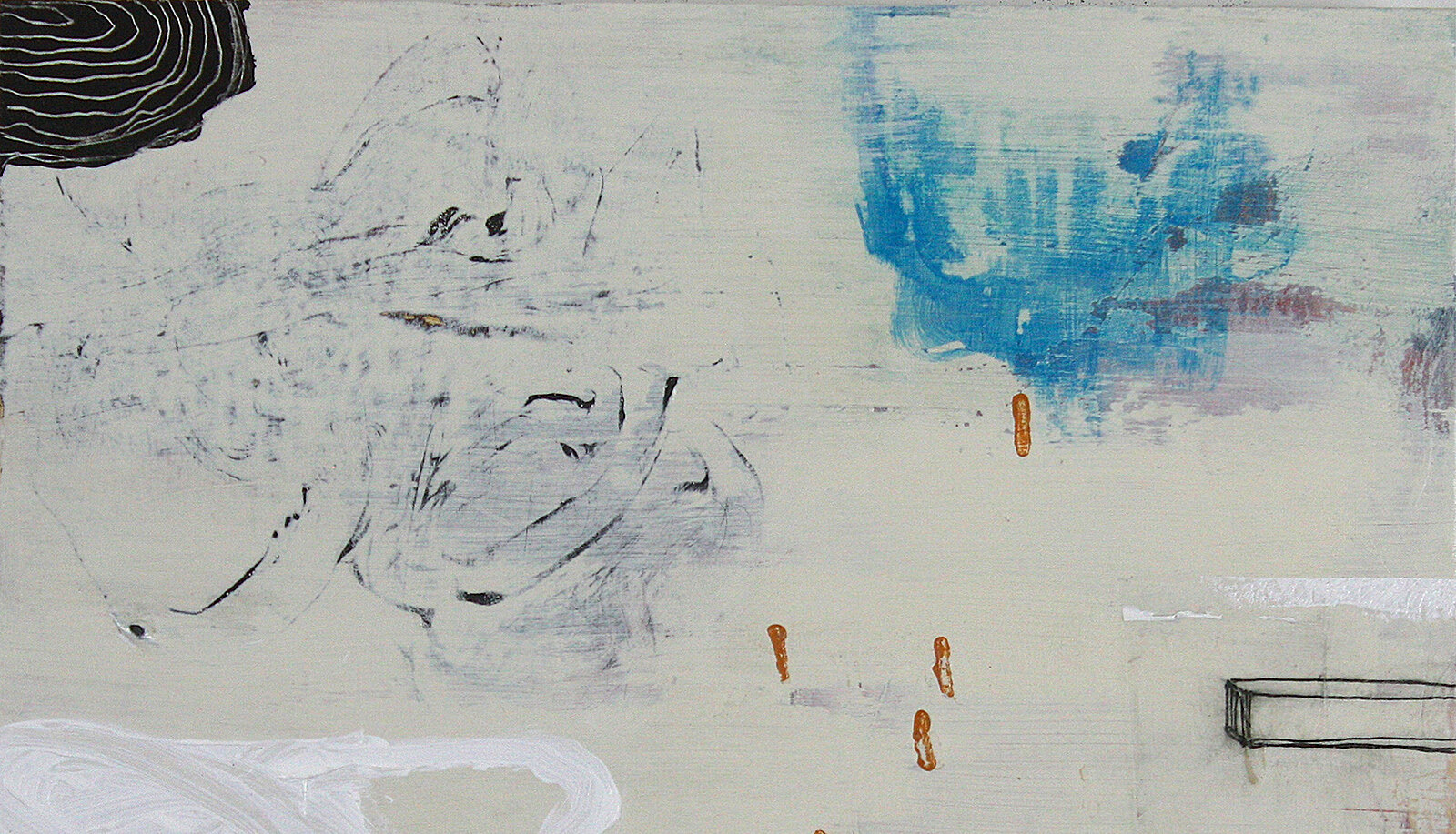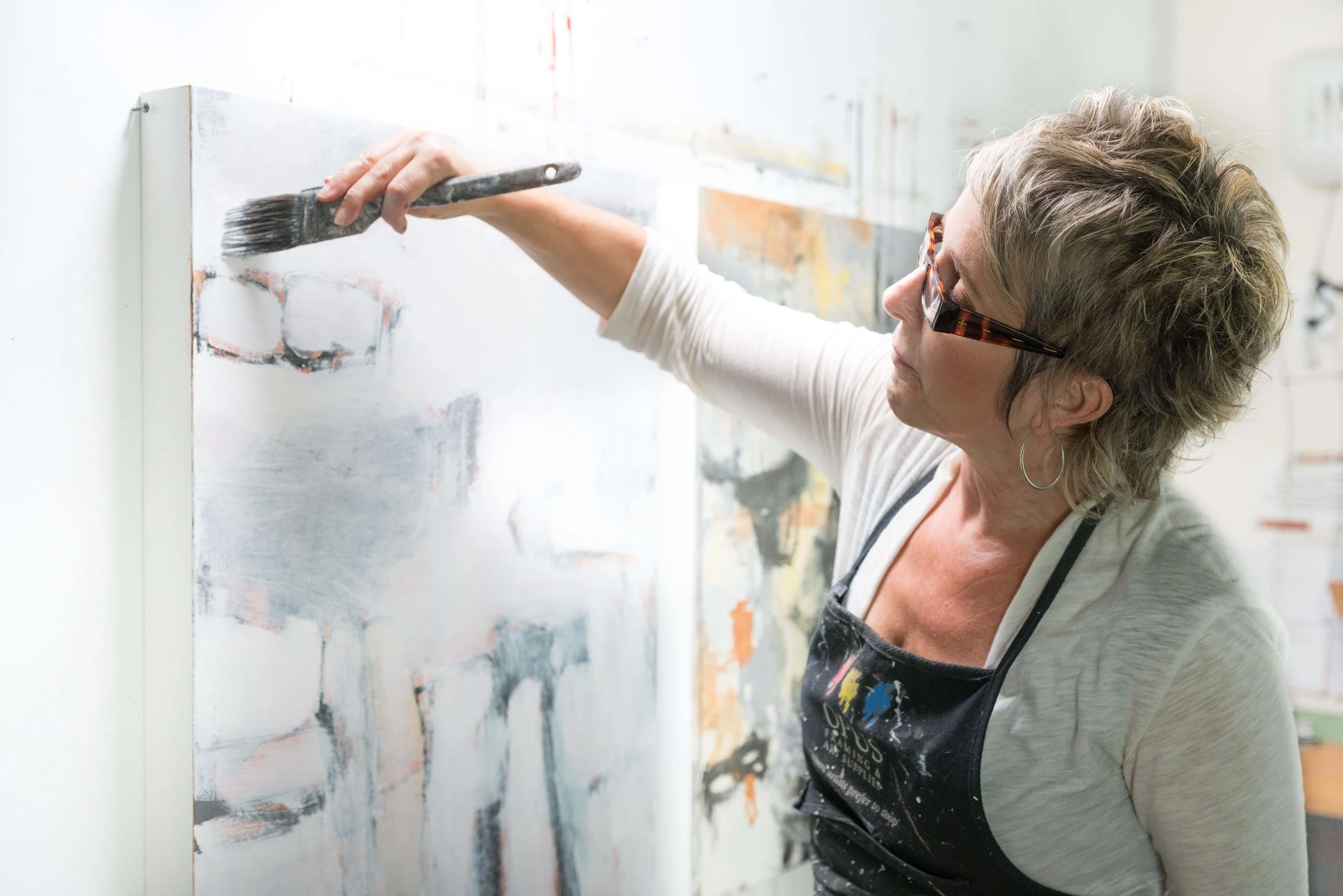BARKING DOGS
/Photo credit Fabian Gieske
It’s often said that the critical voices that an artist hears as they work are like barking dogs – insistent, noisy, and sometimes downright aggressive. It’s hard not to be distracted by them as they demand our attention with their volume and triggering tone. How can we focus on our creative work and drop into that flow space when there is such noise inside our heads? And what can we do to lower the volume and bring ourselves into a better space to create from?
I like the action of identifying these voices and even naming them in such a way that allows us to see them for what they really are, helping us to recognize when they are active. For some artists the voice is a quieter whisper that grows and pops in unexpectedly to offer a derailing comment. But for many of us, when we really focus our attention on our inner dialogue, the voices are cruel and terribly unsupportive. Our inner critic takes great pleasure in interfering with our creative process and will find any opportunity to mess with us. And we all have one.
Somehow just the very act of recognizing these voices helps us to hear them more clearly and feel the painfulness of their judgment. When we have a thought that hurts us in this way it’s not based in any truth about us, but is likely connected to a long held belief we have about ourselves – one that we somehow decided was true about us because that’s what we were told. Our early experiences in life form our personality and the negative messages we may have received about ourselves become an accepted truth. But, it never was our truth...it was someone else’s truth.
What a relief it is to finally recognize we actually don’t have to believe everything we think. Many of our thoughts are just a false narrative and something we can challenge and rewrite, building new beliefs – ones that are more in alignment with our desires for ourselves. But how do we get from barking dogs to rewriting our beliefs?
The first step is to listen. Just as we would do for a loved one when they are struggling and needing our support. We listen with compassion and with a desire to understand, so we can help. We need to be able to offer that to ourselves in these moments of weighty self-criticism. If we listen to what we are actually saying to ourselves from a place of compassionate observation, we can begin to clearly identify our unproductive thinking and decide that is not true for us, and we don’t have to believe that thought.
Questioning our thoughts is the gateway to self-awareness and provides us with opportunities for growth and change. When we engage with curiosity in our art-making and our thinking, we become more open, more resilient, and more authentic. So we listen, then we become curious and we question those thoughts.
As we explore the quality of our thoughts we can begin to notice the tone – is this thought supportive or is it unsupportive? If it is an unsupportive thought then why would we invite it in? Well, sometimes it’s a barking dog insisting on our attention...so we let it in, but we can also take control and correct that thought, just as we might quiet a barking dog. And, when the barking dog settles, we offer it praise and acknowledgment for the better behaviour. We can do this for ourselves as well – acknowledging our very action of reframing our thoughts from something unhelpful, and even damaging, to something neutral or perhaps supportive for us.
Reframing our thoughts is a practice that helps us to align our thinking with our desires for ourselves. When we can offer ourselves encouragement, support and compassion, we have much more capacity for the emotional work that art-making requires of us. We can meet failed attempts, ugly starts, and moments of feeling completely lost with a different kind of energy – one that is rooted in the understanding that art-making is hard work and we need to help ourselves along the way, not bombard ourselves with noisy, critical dialogue.
And because this is practice – like any other practice – we need to continually recommit to it and to ourselves. We need to start again each day with the intention of supporting ourselves and our work. We may even need to recommit moment by moment at times when things are particularly challenging. For instance, during these recent and unsettled times many artists are hearing the “why bother” voice, and that has become the new noisy barking dog.
You see the inner critic is tricky and is always waiting for a crack in our resiliency. Even when we are working in a wonderfully productive way, perhaps digging deeply into the essence of our creative work and connecting the dots of meaning, the critic will try a new approach to see if it can sabotage that forward movement. A client of mine recently sparked a dialogue with what she called her “therapist barking dog.” She was exploring the symbols in her work, connecting with a potent place in her expression and choosing to consider how the ways she was applying paint and generating imagery related to her inner world. As she worked the therapist barking dog appeared and started to try to make every painting action a futile attempt at authenticity. It called her attention to every move, asking for it to be dissected and analysed. This caused her to feel self-conscious and she would tighten up. The work felt forced as a result.
When she gave her attention to the inner dialogue she noticed the tone and quality of the commentary. While it was connected with her deeper dive towards understanding more about her authentic imagery, the comments were actually demeaning and poking fun at her – like subtle, judgemental jabs. The bottom line is the therapist barking dog was attempting to undermine her growth in this area and prevent her from becoming more connected to her truest expression. As she showed up more for herself, the inner critic found another way to interfere. Thankfully, she knew to tune into the quality of the feeling that accompanied this thought and brought that into her awareness to be worked with. She decided that the best strategy at that time was to identify and more quickly recognize the pattern so that she could quiet the inner dialogue while she was working. When she was looking at her work later, she could then invite the inner therapist to join in for some productive, analytical discourse.
It’s when we attune to this inner space – our inner space – with a sensitivity and commitment to knowing more about the quality of our thoughts and the role they play that we can become more mindful and cultivate a place for our creativity to thrive. We need to till the soil, add the compost, and pull the weeds in the garden of our thinking minds. When we do, we can grow the most wonderful forms of expression and make our art with more ease and have it be reflective of our truth. When we change the way we engage with our inner dialogue, we can question and change our beliefs – moving from barking dogs to rewriting our personal story, aligning it more closely with our truest purpose.
Prefer to listen? Click on the link below to listen to and/or download the audio version of this Blog post.


















